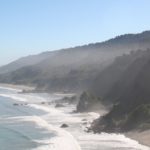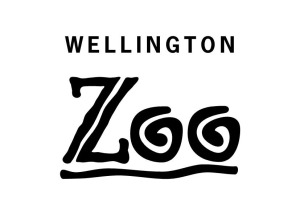
Maori Name
tāiko
Scientific Name
Procellaria westlandica
Other Names Used
Westland black petrel
The West Coast’s very own seabird, the Westland petrel (Tāiko, Procellaria westlandica) is endemic to New Zealand and breeds only at a few colonies between Punakaiki and Barrytown. During the breeding season, when they have eggs or chicks ashore, the adults mostly feed off the West Coast between Haast and Farewell Spit, with some birds passing through Cook Strait and feeding near Kaikoura, or even on the Mernoo Bank east of Banks Peninsula. Due to their large size and aggressive behaviour, they have continued to successfully nest and breed onshore, as they are able to fend off predators that pose threats to other species.
The Westland petrel’s breeding season begins in late March/early April, when they return to the West Coast to prepare their burrows for nesting. A female petrel lays one egg in each breeding season, and, like all other seabirds, both male and female take turns incubating the egg and feeding/guarding the chick for up to six weeks after it has hatched. Petrels are nocturnal on land, returning at dusk to their nests to feed their chicks and rest before departing again at dawn to hunt for fish, squid, and crustaceans. Between breeding seasons, Westland petrels migrate to South American seas leaving between September and November.
Fast Facts about Tāiko
- Westland petrels breed only on New Zealand’s South Island between Punakaiki and Barrytown.
- Punakaiki and the surrounding coastal area hosts the largest colony of returning petrels.
- In total, there are roughly 4,000 pairs breeding each year.
- Petrels nest primarily under the cover of coastal broadleaf forest.
- The Westland petrel is a large, all-dark bird, with a stout, pale yellow and grey beak.
- Westland petrels can breed from 5 years old, but 7 years old is typical for first breeding.
- Females lay one egg at a time, with a long-term, monogamous male partner.
- Eggs are laid in May or June, and hatch in the last half of July.
- Petrel parents take turns fishing and feed chicks by regurgitation when they return to the burrow at night.
- Baby petrels fledge (leave the nest) between early November and mid-January.
- Some petrels live to be nearly 40 years old.
- Petrels feed on fish, especially lantern fish, as well as waste from fisheries/fishing operations.
- After the breeding season, petrels fly to the seas off the coast of western South America, where they moult and remain until they return to the West Coast for the new breeding season.
- Though the population of petrels is considered to be stable, they face threats from commercial fishing, and like other seabirds, predation by land animals.
Where do they live?
 During the breeding season, the Westland petrel nests on the West Coast of New Zealand’s South Island, between Punakaiki and Barrytown, in burrows in the dense coastal forests. When the breeding season ends, the petrel heads to South America waters to feed off the coasts of Chile and Argentina.
During the breeding season, the Westland petrel nests on the West Coast of New Zealand’s South Island, between Punakaiki and Barrytown, in burrows in the dense coastal forests. When the breeding season ends, the petrel heads to South America waters to feed off the coasts of Chile and Argentina.
What are the threats?
The Westland petrel is highly susceptible to commercial fishery bycatch. Because they regularly feed off the waste from fisheries/commercial operations, the risk of getting caught in nets or on lines is high. The Westland petrel also faces threats similar to those faced by other seabirds on New Zealand’s West Coast. Predators such as stoats, possums and weka probably pose a minor threat, though wild pigs and free roaming dogs do present a threat. As petrels rely on a very small breeding and feeding ground, they are especially sensitive to threats related to weather and climate change, such as landslides, erosion, and depletion of food sources due to changes in marine environment.
Lights from streetlights, buildings and vehicles present a threat, distracting birds, especially young birds, and they may come down on roads where they may be run over or other areas where they struggle to get airborne.
West Coast Penguin Trust’s Chair and Head Scientist reviewed all published and unpublished data relating to this species with support from the JS Watson Trust via Forest & Bird. The report, A review of the biology and ecology and an evaluation of threats to the Westland petrel Procellaria westlandica is available here.
The Trust submitted against proposals to mine the Barrytown flats, close to the flightpath of Westland petrels, in June 2020 amidst concerns that lighting associated with the operation, both built or vehicle, would pose a significant risk to Westland petrels. That risk had neither been identified or mitigated. Read our submission here.
Where can I see them?
Between April and November the petrels can be seen as they raft up (gather) offshore in the hour before dusk from the McMillan Road beach just south of Punakaiki. Immediately after dark they can be seen flying inland, the main flight paths passing over the Conservation Volunteers facility 3.5 km south of Punakaiki, or following the south bank of the Punakaiki River.
Read more about the Westland petrel on the NZBirdsOnline page here.
And on a blog by Kerry-Jayne Wilson for the Agreement on the Conservation of Albatrosses and Petrels here.






 We have a fabulous opportunity to maintain and extend our penguin conservation projects, focussing on our research and extending to practical solutions, education and advocacy.
We have a fabulous opportunity to maintain and extend our penguin conservation projects, focussing on our research and extending to practical solutions, education and advocacy.


















